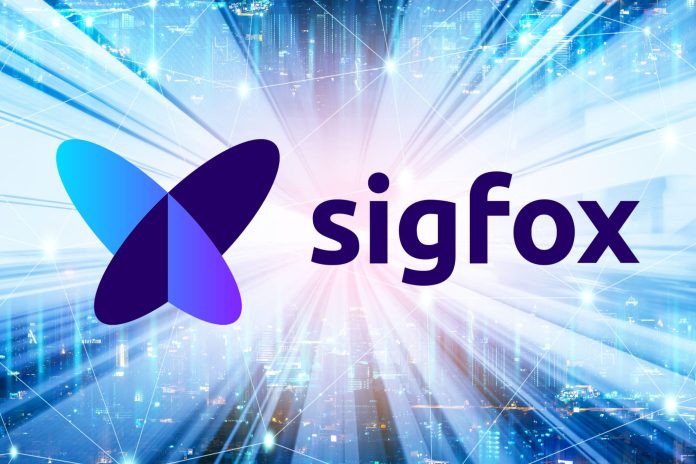Sigfox has been placed into receivership in France, with a six month window to find a new owner. The company’s chief executive, Jeremy Prince, instructed the Toulouse Commercial Court to open the procedure yesterday (January 26), to place Sigfox, as well as local Sigfox operator Sigfox France into receivership, in bid to find new buyers to take the business forward. It cited a corporate slowdown as a result of the Covid-19 pandemic and global chip shortages.
A statement from Sigfox said: “The Toulouse Commercial Court opened today, at the request of the CEO, a receivership procedure for the benefit of Sigfox and its subsidiary Sigfox France, accompanied by an initial observation period of six months… to make it possible to identify, thanks to the implementation of a transfer plan, new buyers with the capacity to work for the long-term development of Sigfox and… the maintenance of jobs.”
The news, since confirmed, was first reported in French publication Notre Temps, which quoted a “slower adoption cycle” as the reason for the firm’s financial crisis. Elsewhere, Sigfox was quoted to state: “The IoT sector has been marked by the Covid-19 crisis, which has slowed activity over the past two years, and an electronic component market that has been in short supply for several months.”
It added: “These factors have weighed heavily on the company’s financial situation and in particular its level of indebtedness, which today makes it difficult to accelerate the development of Sigfox and its world-renowned technology in an increasingly competitive market.” Sigfox will continue with its commercial activities, it said, and to serve its customers.
The firm, widely credited with pioneering low-power wide-area (LPWA) connectivity for IoT sensors, and paving the way for the likes of LoRaWAN and NB-IoT, has been in trouble for some time. Notably, co-founder and chief Ludovic Le Moan stepped down from the company a year ago, replaced by Jeremy Prince, previously in charge of its operations in the US. His exit was preceded by the departure of 47 staff, including 25 on a voluntary basis.
Le Moan had become an increasingly controversial figure, with reports in the French press about misconduct and harassment at the firm. Sigfox said at the time it “condemns with force any act of misconduct” and “takes the allegations quoted in this article very seriously”. The company also sold its wholly-owned Germany network to Sigfox operator Heliot Europe (acquired by venture capital firm Cube Infrastructure Managers as part of the deal).
It defended the move as part of a master strategy, and said its remaining French and US operations were also up for sale. There were moves to modernise, as well, following the appointment of Prince. The company announced a deal a year ago to migrate its entire IoT infrastructure to Google Cloud in pursuit of “better scale, increased reliability” and suchlike. It had previously managed its global core network and data services from its headquarters, in Toulouse.
As ever, the company talked a good game. Sigfox has 350 staff, across offices in Boston, Dallas, Dubai, Madrid, Paris, São Paulo, Singapore, and Tokyo, as well as its base in Toulouse. It claims to process 80-odd million messages per day from 20-odd million devices, on Sigfox networks in 72 countries (covering 1.3 billion people, it reckons). In 2019, it had set itself a frankly bonkers target of connecting one billion IoT devices by 2023.
Even last July, in conversation with Enterprise IoT Insights, its top brass had declared (like so many others in the LPWA game) that the long wait for massive IoT is almost over. Sigfox was just ahead of its time, they said; the high-cost control-freakery of its business model has been a necessary consequence of its seismic undertaking, a decade ago, to create a market from scratch. But that work was finished, almost, they declared.
Demand among global enterprises for IoT connectivity is about to explode, they said. The French firm was subtly shifting gears to load its global network infrastructure. The firm rationalised its (long) march on massive IoT is a journey in three parts: a ‘build’ phase to test the tech (2010-14); an ‘expansion’ phase to build the network (2014-20); and a ‘connectivity’ stage to load the network (2018 onwards).
In between, it announced a series of customer deals, including with China-based IoT maker Queclink on stolen-vehicle trackers, the City of São Paulo for 100,000 water meters, and the City of Marseille for 5,000 storm drains. It also teamed with Irish-American financial software company Stripe to sell IoT airtime online, and with Google to develop edge-based ML capabilities and energy-harvesting specialist Nowi to develop battery-less IoT.
Meanwhile, there was strategic jockeying by its partners. Belgian operator ENGIE M2M sold its Sigfox network to private network provider Citymesh in June last year. Sigfox operator iWire Connect raised $34 million in Series A funding, also last June, to build Sigfox networks in 12 countries in Asia, the Middle East, and Africa. Reports claim UK operator WND stopped making payments for roof rentals during the pandemic.
These stories just scratch the surface, clearly, of a volatile Sigfox community. Even this month, Sigfox spoke in great detail in these pages how it plans to get to $0.20-$0.30 on IoT trackers (‘tracers’), to push the envelope on massive IoT. But constantly – sometimes in unprintable whispers, sometimes in the French press – the story unravelled, faster and faster, about financial uncertainty, and worse, inside the walls of the original poster child of French IoT.

